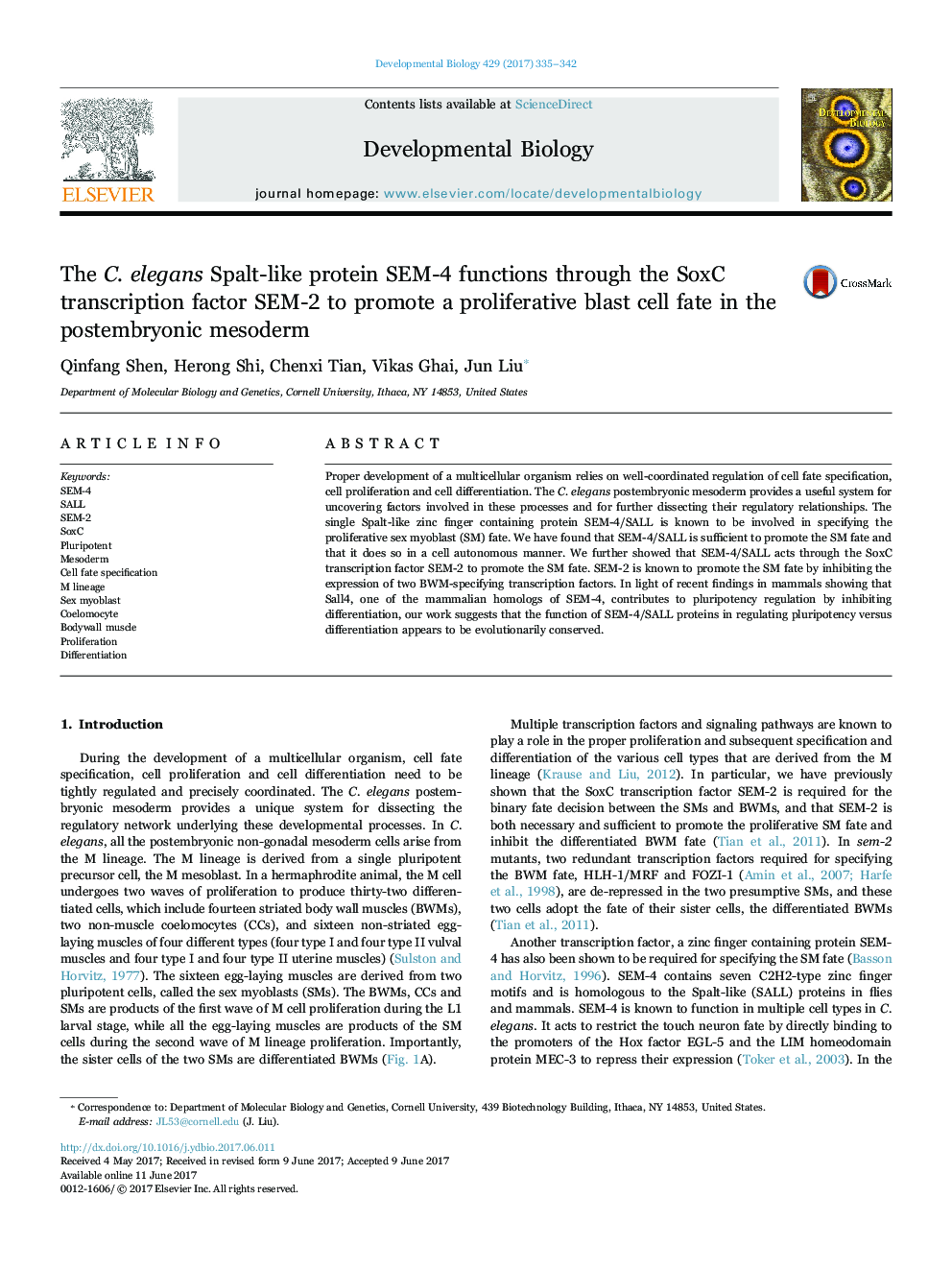| Article ID | Journal | Published Year | Pages | File Type |
|---|---|---|---|---|
| 5531912 | Developmental Biology | 2017 | 8 Pages |
â¢SEM-4 is necessary and sufficient to specify the multipotent sex myoblast (SM) fate.â¢sem-4 functions autonomously to specify the SM fate.â¢SEM-4 functions through the SoxC transcription factor SEM-2 to specify the SM fate.
Proper development of a multicellular organism relies on well-coordinated regulation of cell fate specification, cell proliferation and cell differentiation. The C. elegans postembryonic mesoderm provides a useful system for uncovering factors involved in these processes and for further dissecting their regulatory relationships. The single Spalt-like zinc finger containing protein SEM-4/SALL is known to be involved in specifying the proliferative sex myoblast (SM) fate. We have found that SEM-4/SALL is sufficient to promote the SM fate and that it does so in a cell autonomous manner. We further showed that SEM-4/SALL acts through the SoxC transcription factor SEM-2 to promote the SM fate. SEM-2 is known to promote the SM fate by inhibiting the expression of two BWM-specifying transcription factors. In light of recent findings in mammals showing that Sall4, one of the mammalian homologs of SEM-4, contributes to pluripotency regulation by inhibiting differentiation, our work suggests that the function of SEM-4/SALL proteins in regulating pluripotency versus differentiation appears to be evolutionarily conserved.
